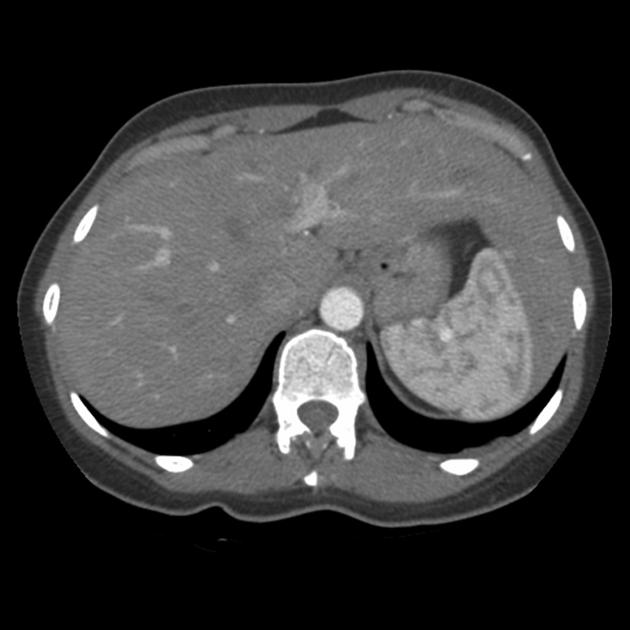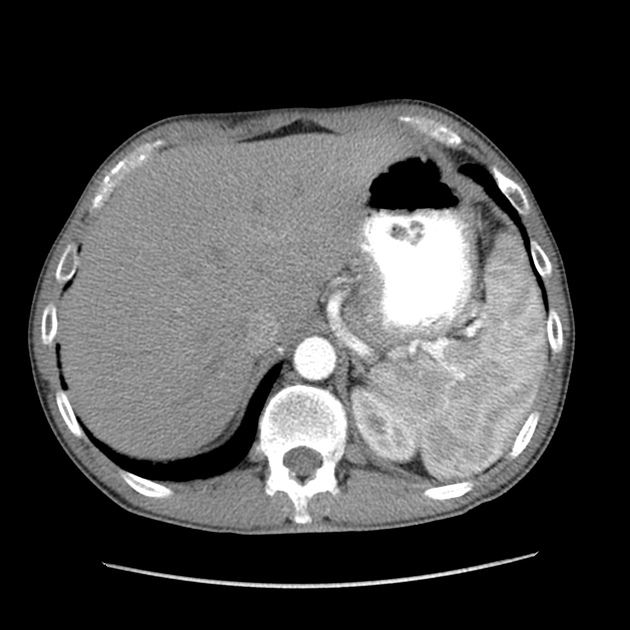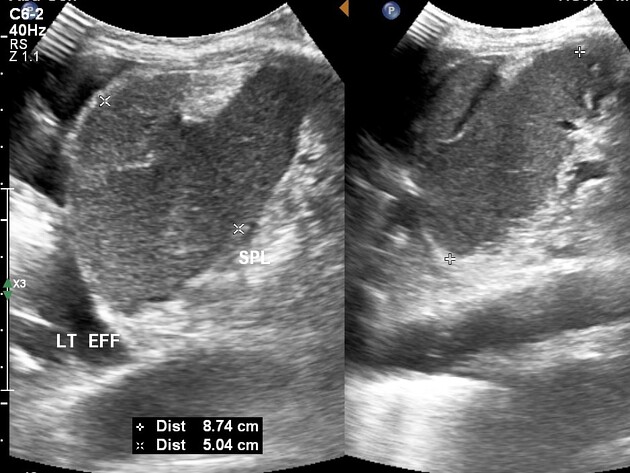spleen







The spleen is an organ of the hematological system and has a role in immune response, storage of red blood cells and hematopoiesis.
Gross anatomy
The spleen is a wedge-shaped organ lying mainly in the left upper quadrant (left hypochondrium and partly in the epigastrium) and is protected by the left 9to 11 ribs. It is soft, highly vascular and dark purple in color.
Size and weight vary from person-to-person but on average is around 2.5 cm thick, 7.5 cm broad and 12.5 cm in length. For pediatric measurements, see the article spleen size (pediatric)
The spleen has two poles (superior and inferior), three borders (superior, inferior and intermediate) and two surfaces (diaphragmatic and visceral). It is enclosed by a thin capsule, which is easily ruptured.
The spleen is completely covered by peritoneum, except at the hilum, which forms a number of ligaments :
- gastrosplenic ligament
- attaches the spleen to the greater curvature of the stomach
- contains short gastric and left gastroepiploic arteries
- splenorenal ligament
- attaches the spleen to the left kidney
- contains splenic artery and vein and the pancreatic tail
Relations
- diaphragmatic surface (superoposteriorly): dome of the left hemidiaphragm, left 9th to 11th ribs.
- visceral surface (anteromedially)
- pancreatic tail
- left kidney and adrenal gland
- stomach
Arterial supply
Venous drainage
Lymphatic drainage
- from splenic hilar lymph nodes to retropancreatic lymph nodes, then draining to celiac lymph nodes
Innervation
- sympathetic fibers from the celiac plexus (influence blood flow)
- parasympathetic innervation from the vagal trunk
Variant anatomy
- splenunculus
- wandering spleen
- polysplenia
- asplenia
- splenogonadal fusion
- retrorenal spleen
- splenic cleft: may mimic traumatic laceration
Radiographic appearance
Ultrasound
- best assessed in the supine, left lateral position with the left arm placed behind the head
- visualized best obliquely in the 9th or 10th intercostal spaces
- echogenicity usually higher when compared to the liver, but may be iso- or hypoechoic
CT
- splenic parenchyma should be assessed in portal venous phase as inhomogeneous splenic enhancement (zebra or psychedelic spleen) seen on arterial phase can mimic splenic laceration or contusion
Development
Embryologically, the spleen forms from several splenic buds that fuse together within the dorsal mesentery of the midgut (dorsal mesogastrium) .
Siehe auch:
und weiter:


 Assoziationen und Differentialdiagnosen zu
Assoziationen und Differentialdiagnosen zu 